I recently spent a couple of Lisbon days exploring one of the cities most interesting suburbs.
This is probably the best section of the city in which to get in touch with Portugal’s glorious past.
It was from Belém that the explorer Vasco da Gama set out to India by sea in 1497.
When he returned the following year with a boatload of valuable spices — having circumnavigated Africa for the first time and opened up a water route to India which bypassed the much longer, slower and more expensive Silk Route — the king Dom Manuel fulfilled a promise to the explorer to build the Mosteiros dos Jerónimos.
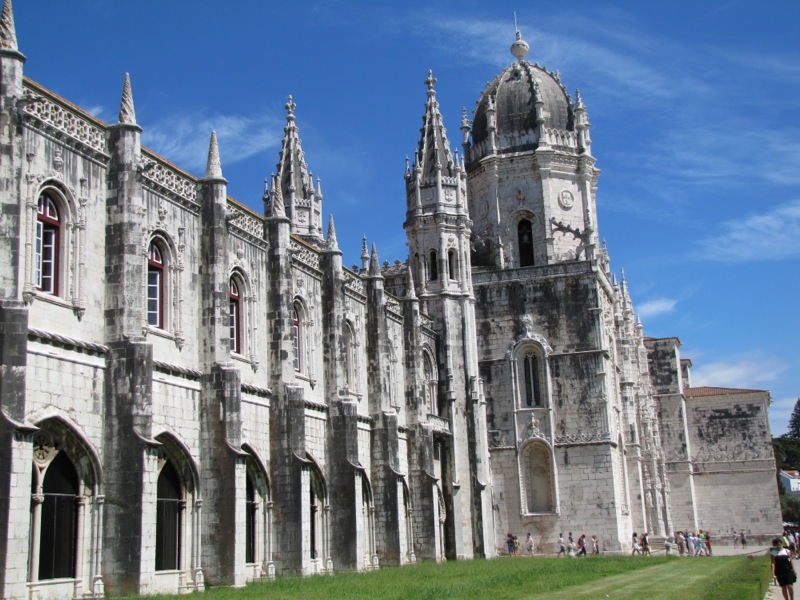
The monastery and adjacent church are filled with nautical imagery and references. The pillars of the church are carved in the shape of giant palms, and the limestone cloister of the monastery twists like rope and supports caravels and canon:
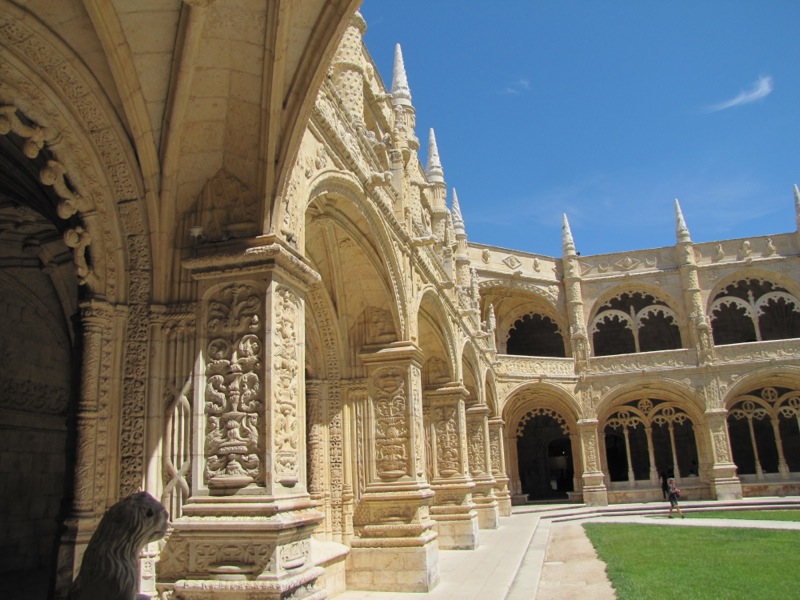
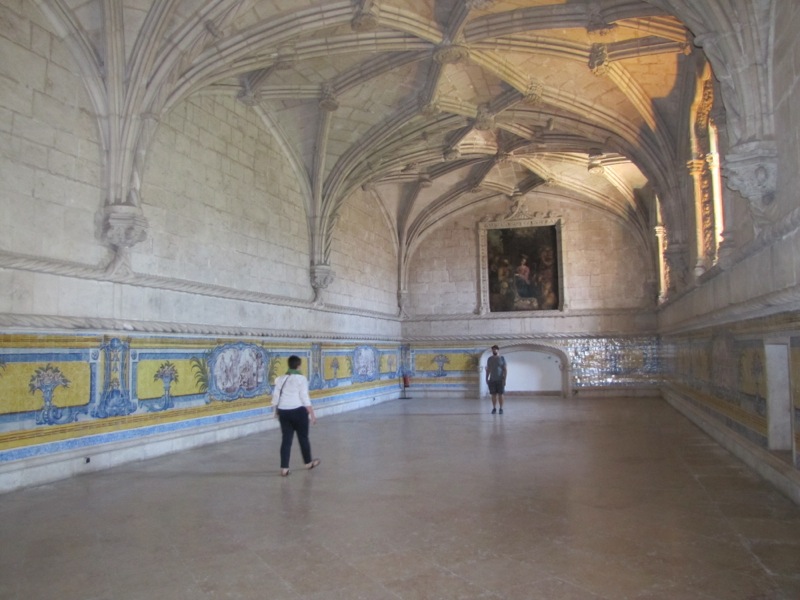
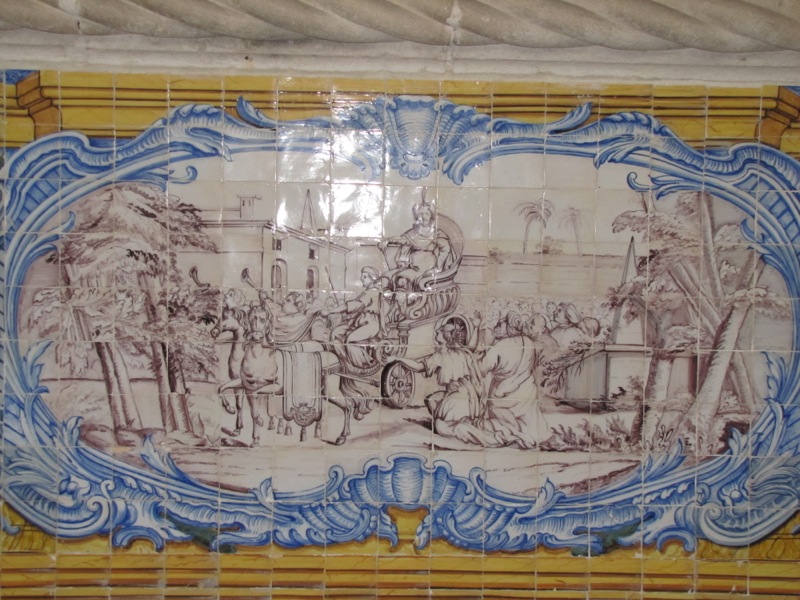
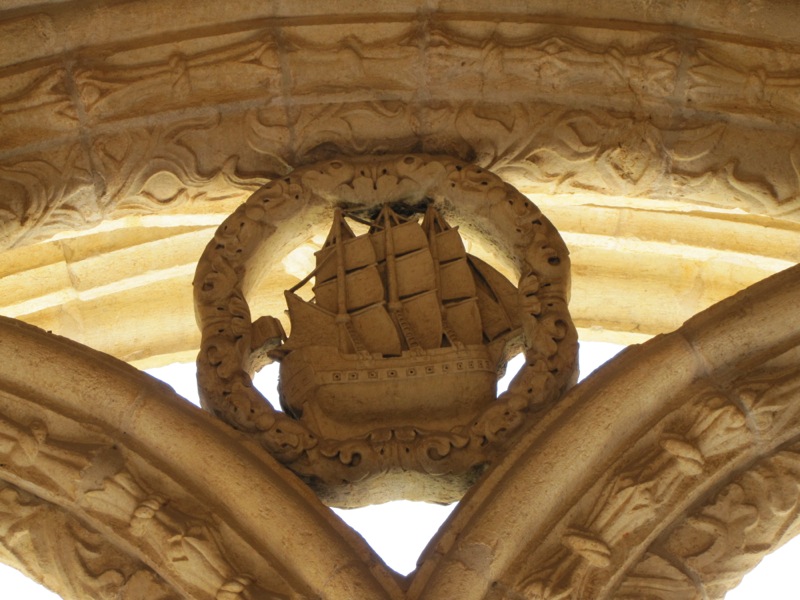
And even the towering 32-metre high entrance portal mixes seafaring exploration and soul saving, with statues of prince Henry the Navigator and other royal patrons mix freely with the Archangel Gabriel and the Virgin Mary:
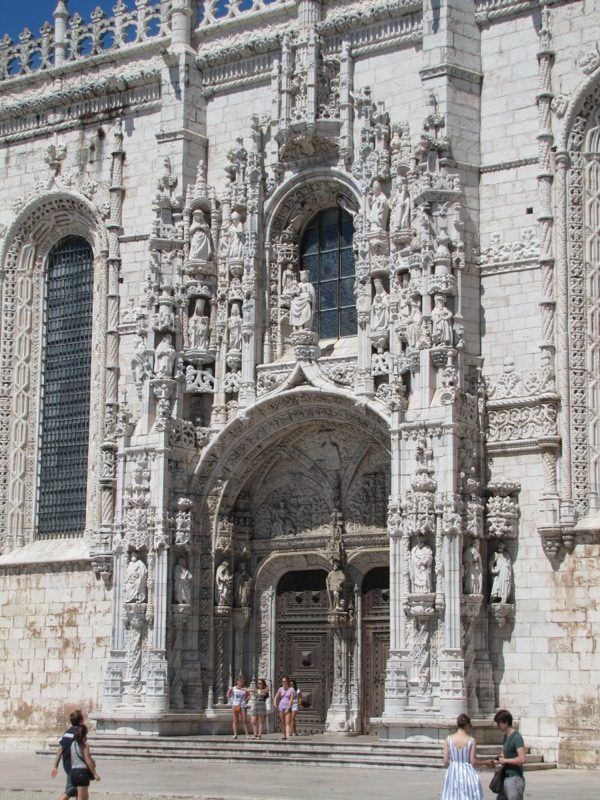
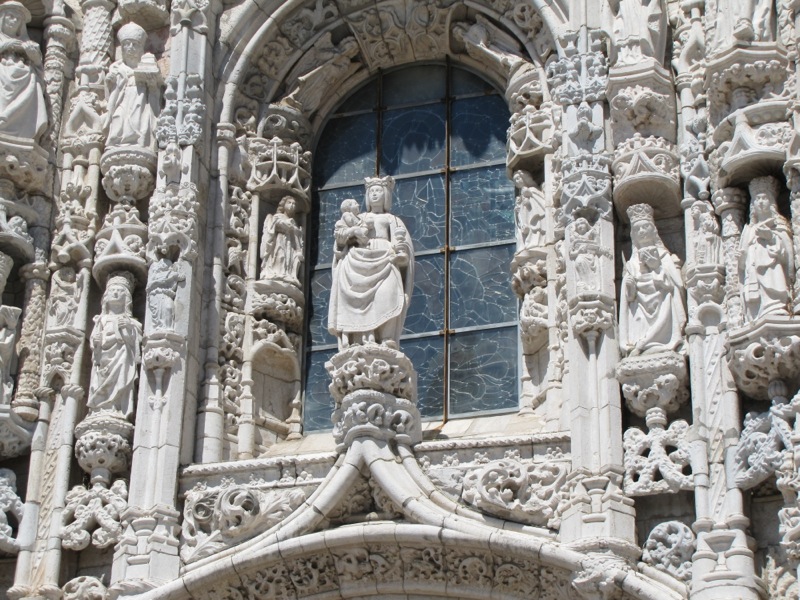
Vasco da Gama’s tomb is just inside the entrance of the church:
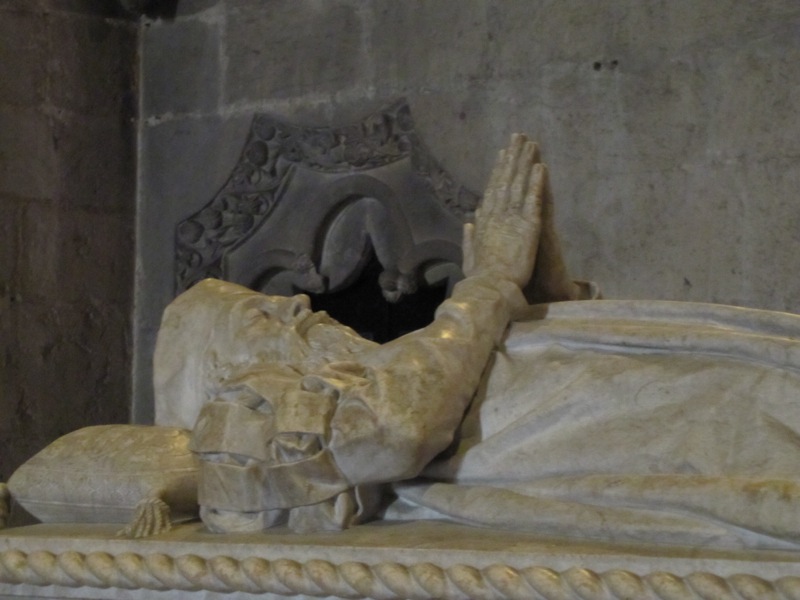
Right across from Portugal’s greatest poet, Luís de Camões (1527 – 1570), author of the epic poem The Lusiads, which chronicles Portugal’s golden age of discovery:
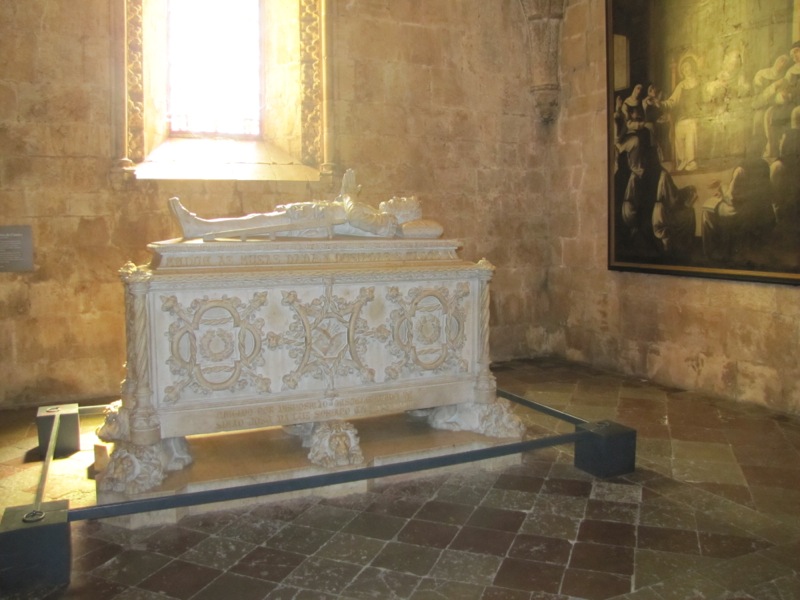
The homage to exploration continues across from the monastery. On the banks of the Rio Tejo is a massive monument shaped like a caravel:
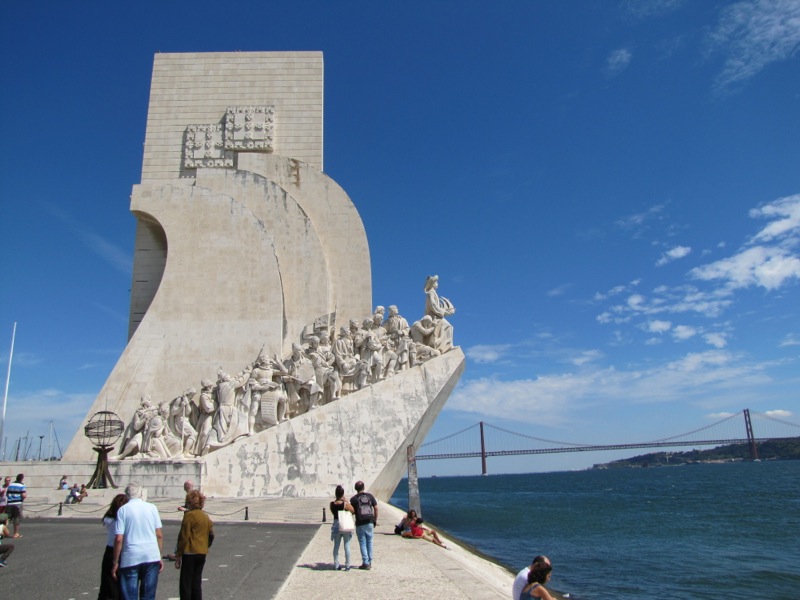
This is the Monument to the Discoverers, built to commemorate the 500th anniversary of the death of Henry the Navigator, who leads a brave band of explorers and sailors out into an unknown world:
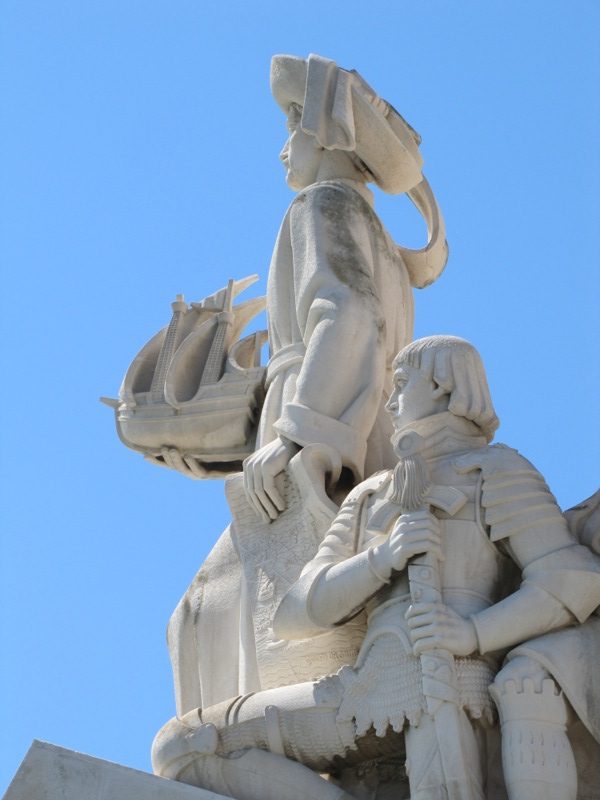
These guys spanned the world at a time when North and South America had only just been discovered. And they gave Portugal colonies in such far flung places as Angola, Mozambique, Cape Verde, Brazil, Macao and Goa.
Wander down river from the Monument and you’ll find the Tower of Belém, another relic of this time. Built in around 1520 to defend the mouth of the Tejo River, this small fortress is a wonderful example of Manueline architecture:
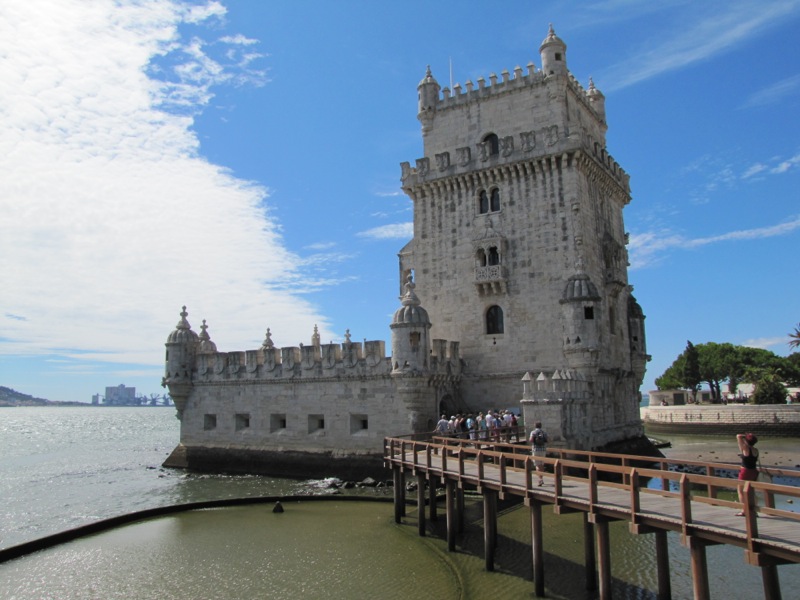
Strolling among these beautiful stone reminders of a time when Portugal and Spain ruled much of the world is a pretty nice way to pass a sunny Lisbon day. But Belém has a couple other secrets as well, for those less navigationally-minded…
One of the highlights for me was the Palácio Nacional da Ajuda, a long 20 minute walk uphill. This particular palace was the permanent residence of the royal family during the reign of King Luis I and his wife, Maria Pia of Savoy.
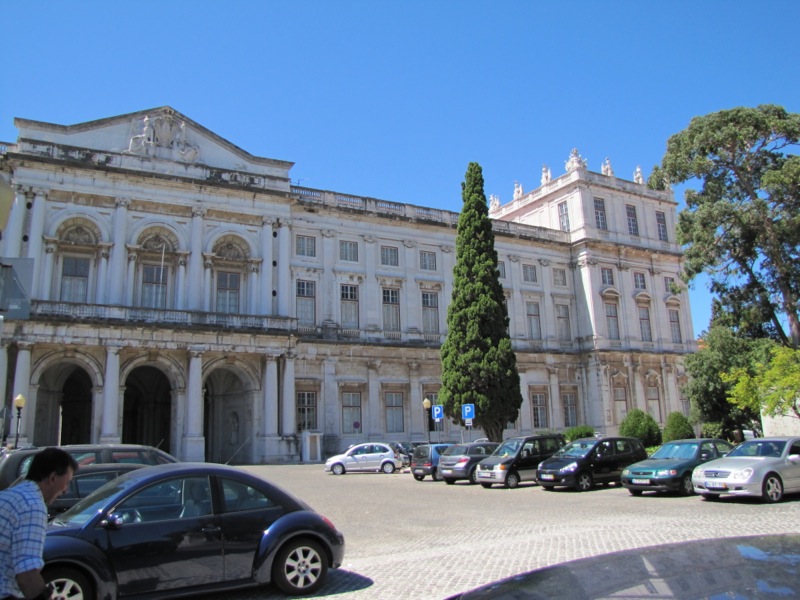
I love old homes, and I pretty much had the entire palace to myself when I visited. I saw the occasional worker in those cavernous rooms, but that was about it…
It’s well worth the trek — or the taxi or tram ride — to get there. I don’t know why more visitors don’t make the effort.
Finally, if you need a break from the heat — or a dose of art — you can wander into the Berardo Collection at the Centro Cultural de Belém. This massive collection of modern art includes works by Andy Warhol, Francis Bacon, Picasso, Man Ray and Mark Rothko. And admission is completely free.
Finish your day with one of the city’s famous custard tarts, a pastéis de Belém, at the Antiga Confeitaria de Belém, a pastry shop that’s been serving them up since 1837.
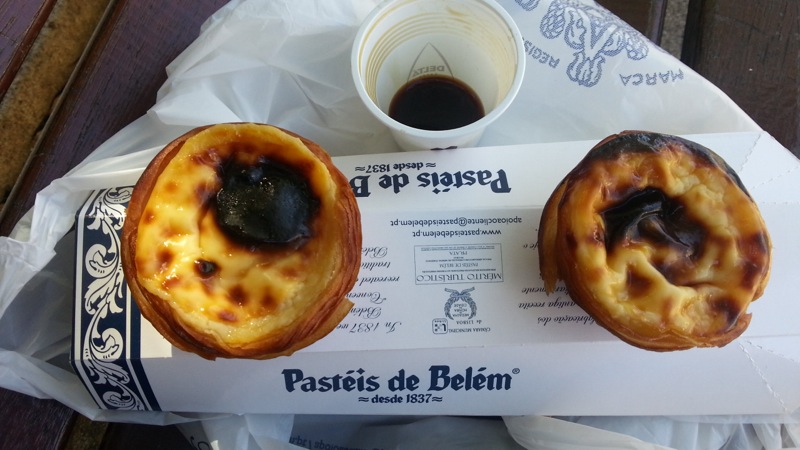
The suburb of Belém is yet another reason to get Lisbon on your travel short list. It’s a great place to spend a couple days of wandering.

Get your FREE Guide to Creating Unique Travel Experiences today! And get out there and live your dreams...
